Photographer Doug Oglesby writes about early Hawai’i, its beautiful flora and fauna, and his love of nature. Read more from this Photography World contributing writer and photographer…click image to link.
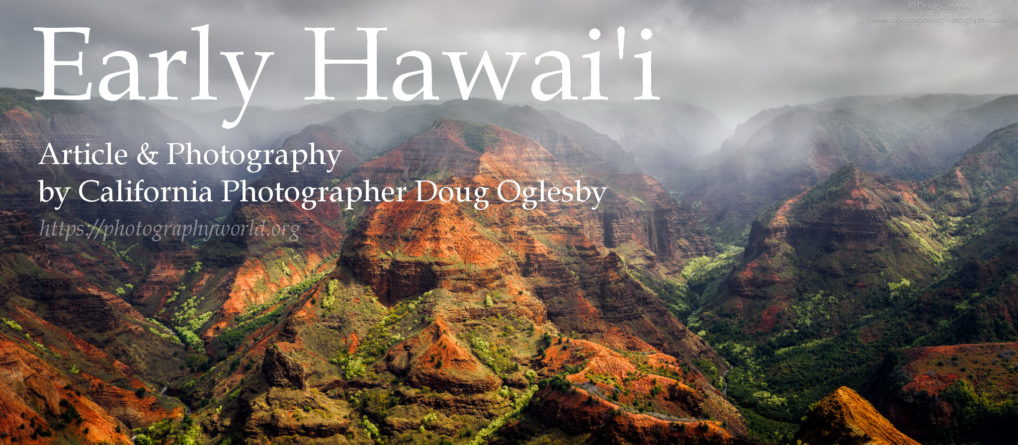
Article & Photography by California Photographer Doug Oglesby, Published October 1, 2016
Edited by Photography World’s Mina Thevenin
This article originally appeared in the April 2016 print edition of Photography World’s mag-book, Photography World, Journal 1

 awai’i was discovered between approximately 200 AD and 1000 AD by Polynesian voyagers from the South Pacific. They were likely from Marquesas, traveling thousands of miles in canoes, using the stars to navigate, and bringing with them food, animals and plant life to populate their new home (1). The first island populated in early Hawai’i history was likely the Big Island.
awai’i was discovered between approximately 200 AD and 1000 AD by Polynesian voyagers from the South Pacific. They were likely from Marquesas, traveling thousands of miles in canoes, using the stars to navigate, and bringing with them food, animals and plant life to populate their new home (1). The first island populated in early Hawai’i history was likely the Big Island.
There are two primary theories that explain the settlement of the Hawaiian Islands. The “one-migration” theory states the islands were populated through a single settlement, perhaps as James Michener envisioned in his book Hawai’i: a group of outcast Polynesians fleeing an oppressive island ruler who coerced them into worshiping a god they didn’t believe in. The “multiple-migration” theory believes that the islands were first inhabited by the Menehune from the Marquesas Islands. However, by about 1200 AD the Menehune were overrun by a second settlement of bigger and stronger Polynesians from Tahiti. Evidence of the Menehune has been found across the islands. Each of the islands soon had a ruling Tahitian king.(2)
English voyager Captain James Cook found the Hawaiian Islands in 1778. King Kamehameha I, one of the ruling chiefs of the Big Island at the time, allied himself with Captain Cook and the English’s more advanced weaponry. During this time different tribes inhabited each of the Hawaiian Islands. They fought with each other to expand and protect their territory. In 1782 Kamehameha fought and defeated his cousin, Chief Kiwala’o, on the west coast of the Big Island; and Kamehameha took control of the island.(3)
Other great and violent battles occurred in places like the ‘Iao Valley in Mau’i (‘Iao is pronounced “ee-ow”) where the Battle of Kepaniwai was fought in 1790.(4) In this battle, King Kamehameha I traveled from the Big Island to Mau’i with approximately 1200 warriors. His objective was to take control of all the Hawaiian islands. Kepaniwai is considered to be one of the bloodiest battles in Hawaiian history. Legend says there were so many corpses floating in ‘Iao stream that the water’s flow was blocked (Kepaniwai means the “damning of the waters”).
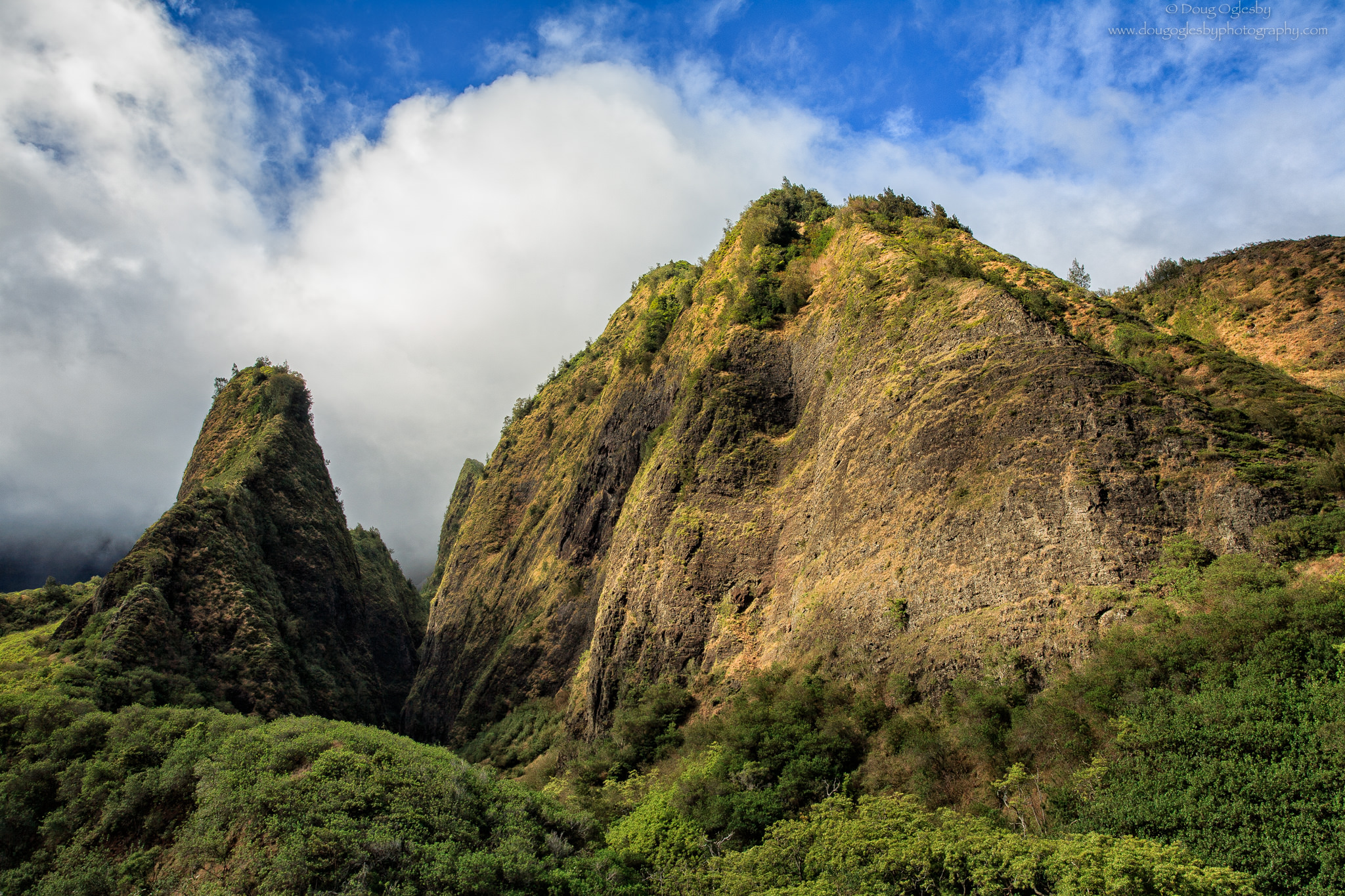
 hile Kamehameha won this battle, he didn’t officially conquer Mau’i until a few years later – along with O’ahu, Moloka’i and Lana’i. In 1810 the final piece fell into place – the ruling chief of Kaua’i recognized the overwhelming strength of Kamehameha and negotiated peace. The islands were officially unified under the rule of King Kamehameha I.(4)
hile Kamehameha won this battle, he didn’t officially conquer Mau’i until a few years later – along with O’ahu, Moloka’i and Lana’i. In 1810 the final piece fell into place – the ruling chief of Kaua’i recognized the overwhelming strength of Kamehameha and negotiated peace. The islands were officially unified under the rule of King Kamehameha I.(4)
Foreigners continued to arrive over the years, including Americans and British. In 1840 Hawai’i created its first written constitution, establishing it as a monarchy. Various American freedoms were included in the early Hawai’i history of its monarchy, such as the freedom of religion and the right to a fair trial. Clearly this constitution was heavily influenced by the British and Americans.(5)
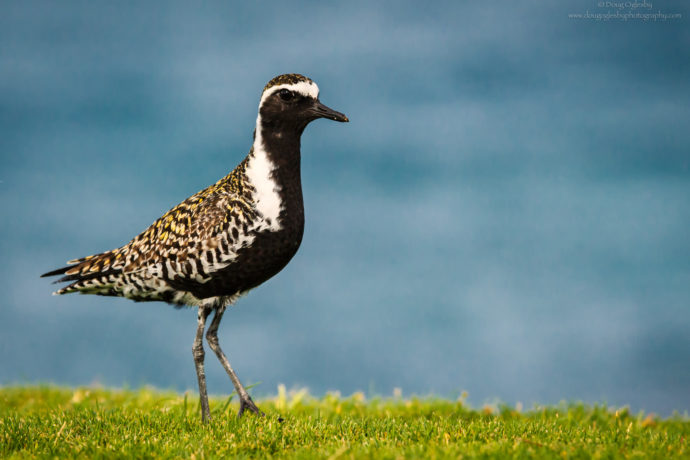
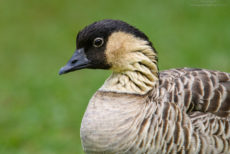
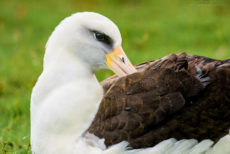
“Wisdom”, the banded female Albatross. She represents hope. She is at least 65 years old (September 2016). Video courtesy of www.hokulea.com.
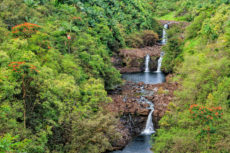

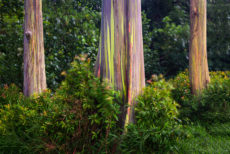
Photographer Doug Oglesby’s image, above, of driftwood—the Kiawe Tree on Mau’i—is rubbed smooth by the ocean. When alive, this invasive and spiny woody pest can puncture rubber shoes and car tires. The thorny tips of this tree, or rambling shrub, are poisonous and can cause swelling and even bruising.
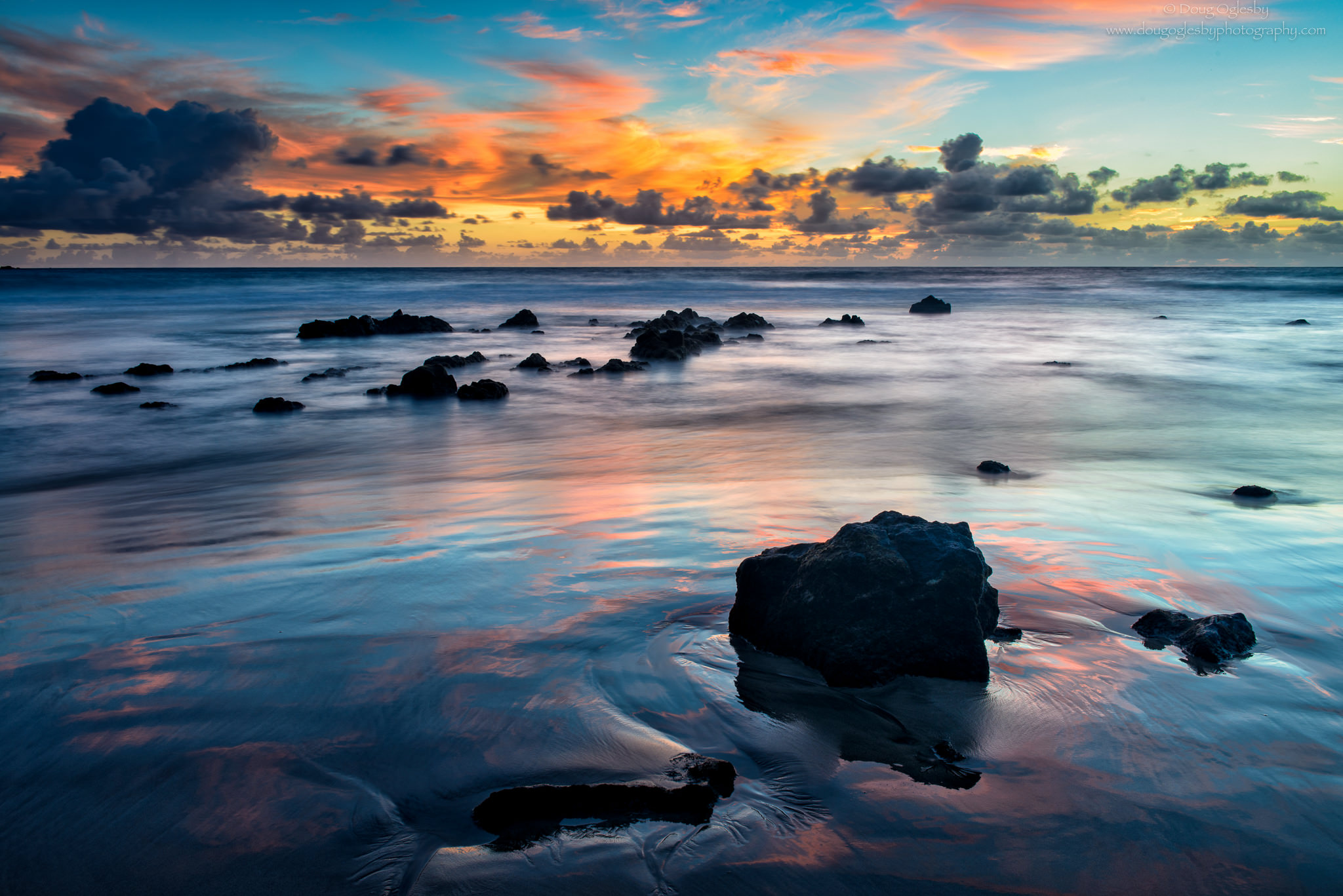
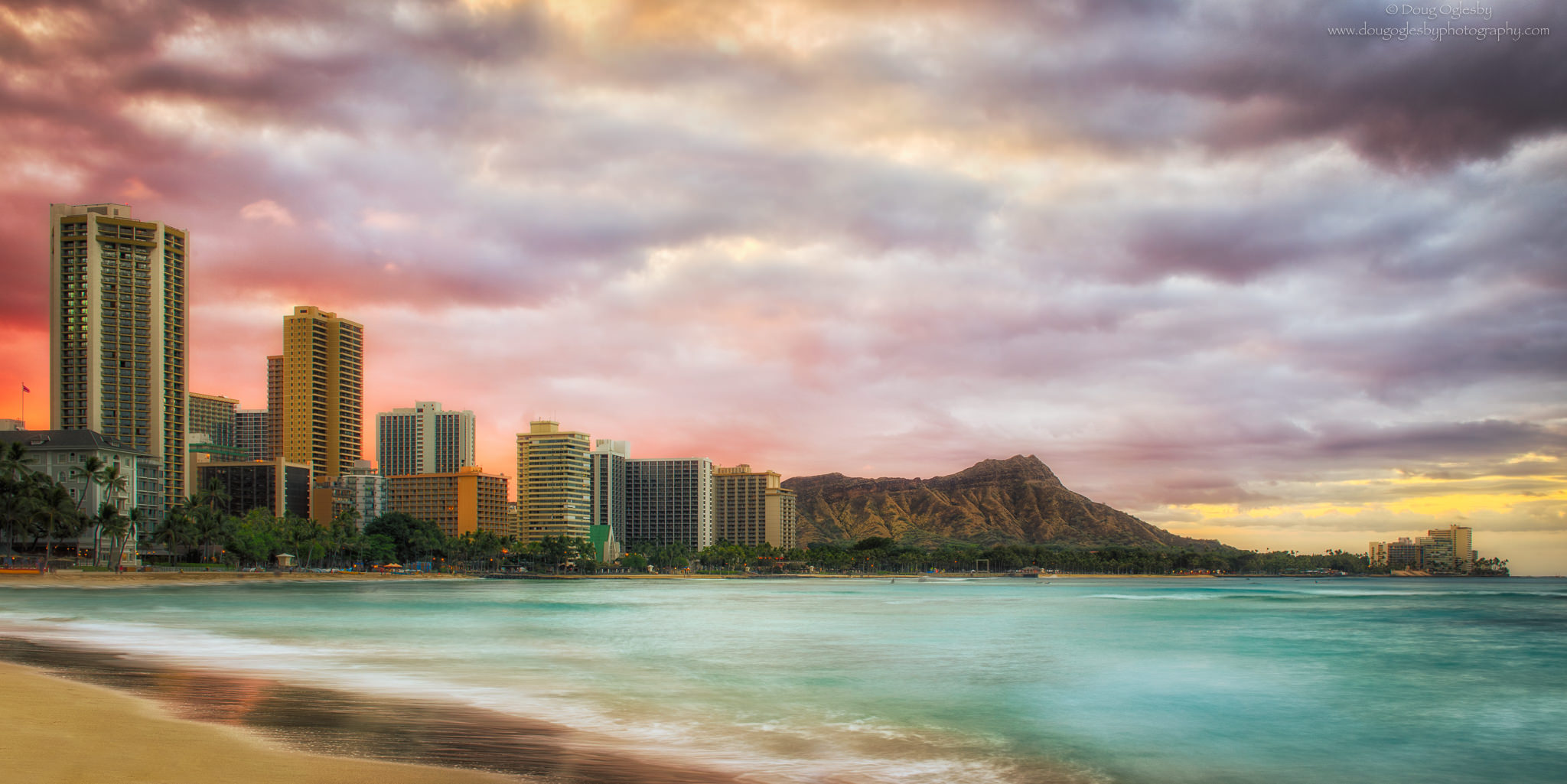

Movement, Erosion & Growth
There is movement, erosion and growth of the islands. All of the Hawaiian Islands were formed from volcanic eruptions that began approximately 30 million years ago, which built the islands, layer upon layer, over millions of years. The Pacific tectonic plate is slowly moving northward and each island moves with it, providing room for a new island to form. As each island moves further north and away from the volcanic hot spot that gave it life, the island stops growing and erosion takes control (6). As these volcanic islands erode they sink back into the ocean and disappear. The Hawaiian Islands are part of the larger Sandwich Islands that run northwest from the main Hawaiian Islands (Captain Cook coined the term “Sandwich Islands” in honor of the Earl of Sandwich, who sponsored Cook’s voyages). If you follow the chain of these islands you will see the life cycle in action. Those islands furthest from the Big Island are in the final stages of their life.(7)
The Big Island is the youngest of the inhabited Hawaiian Islands and is currently on the hot spot, but a new island is believed to be forming about 20 miles off its southeastern coast—Lo’ihi—about 10,100 feet above the ocean’s floor and still 3,100 feet from the ocean’s surface. If it is like the other islands, Lo’ihi will take tens of thousands of years to break the water’s surface (8), until one day this island, too, will become part of the unique and beautiful Hawaiian Islands.
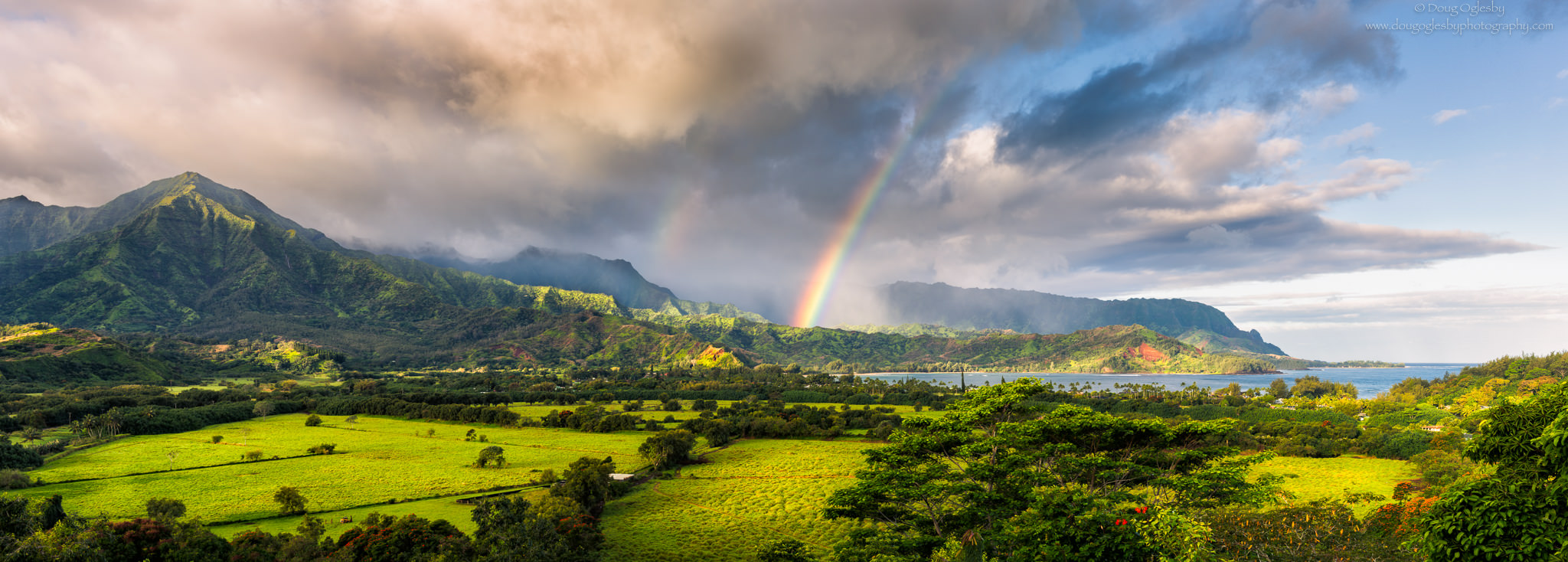
_________________________
RESOURCES for Early Hawai’i History
1. “Life In Ancient Hawaii.” Division of State Parks. Archaeological and History, n.d. Web. 01 Mar. 2016. <http://dlnr.hawaii.gov/dsp/archaeology-history/>.
2. “Aloha Magazine – History, Hawaii.” Aloha Magazine – History, Hawaii. Aloha Magazine, 2014. Web. 01 Mar. 2016. <http://www.alohamagazine.com/history.html>.
3. Menton, Linda K., and Eileen Tamura. A History of Hawaii, Student Book. 2nd ed. Honolulu: U of Hawai’i, 1999. Print.
4. “Lao State Park.” History and Culture. Www.iaovalleystatepark.org/, n.d. Web. <http://iaovalleystatepark.org/history-and-culture-of-hana-maui/>.
5. Group, Pacific Region Web Development. “Hawaiian Goose – Pacific Islands Fish and Wildlife Office.” Hawaiian Goose – Pacific Islands Fish and Wildlife Office. U.S. Fish and Wildlife Service, 20 Sept. 2012. <https://www.fws.gov/pacificislands/fauna/higoose.html>.
6. 3 Menton, Linda K., and Eileen Tamura. A History of Hawaii, Student Book. 2nd ed. Honolulu: U of Hawai’i, 1999. Print.
7. Wayman, Erin. “What We’re Still Learning About Hawaii.” Smithsonian. N.p., Dec. 2011. Web. 01 Mar. 2016. <http://www.smithsonianmag.com/travel/what-were-still-learning-about-hawaii-74730/?no-ist>.
8.”Atoll.” National Geographic Education. N.p., 28 Aug. 2012. Web. 01 Mar. 2016. <http://education.nationalgeographic.org/encyclopedia/atoll/>.
9. “Loihi Seamount: The Next Volcanic Island in the Hawaiian Chain.” Loihi Seamount: The New Volcanic Island in the Hawaiian Chain. Eruptions of Hawaiian Volcanoes; Past, Present, and Future: USGS General Information Product 117, n.d. Web. 01 Mar. 2016. <http://geology.com/usgs/loihi-seamount/>.
__________________________
About the Author
 California Writer and Photographer Doug Oglesby is inspired by nature. He has been a photographer for over 30 years and finds his favorite subjects to shoot during his travels in the western part of the United States. He especially enjoys his nature photography during his trips to Hawai’i, thus this article, Early Hawai’i History.
California Writer and Photographer Doug Oglesby is inspired by nature. He has been a photographer for over 30 years and finds his favorite subjects to shoot during his travels in the western part of the United States. He especially enjoys his nature photography during his trips to Hawai’i, thus this article, Early Hawai’i History.
Doug was published in the Photography World spring print mag-book, Photography World Journal 1, April 2016, which can be purchased @ http://www.blurb.com/b/6966387-photography-world.
A contributing Photography World writer and photographer, Oglesby was also published in fall of 2015 with his article and nature photography, Beautiful Lake Tahoe!
The ruggedness of the mountains, the tranquility of a mountain lake at sunrise, the serenity of a small and remote waterfall,t he relentless power of the ocean, the delicate balance of predator and prey. It’s all amazing to me!
Follow Doug Oglesby on social media. Find more of Doug’s images on his website: Doug Oglesby Photography
__________________________________________
Early Hawai’i History in print is available in the April 2016 mag-book, Photography World Journal 1
0 comments